|
|
Emu Gravel No.1
Tenterfield Station Museum
|
|
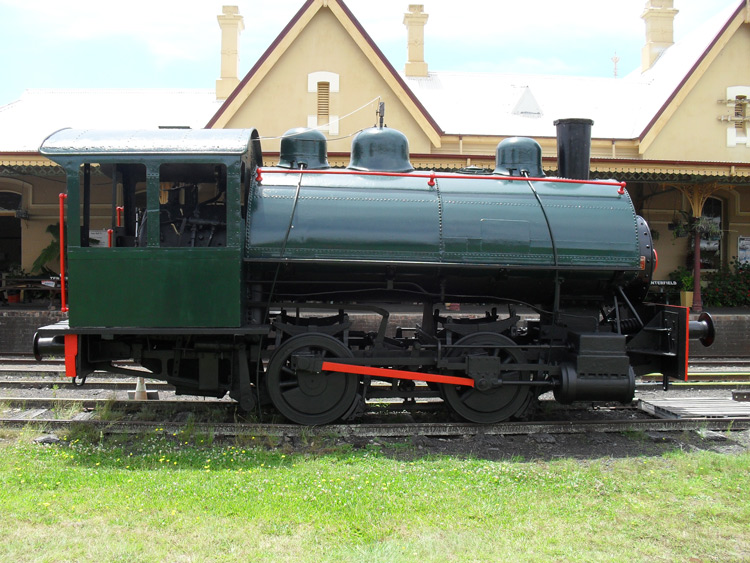
This photograph was contributed by Malcolm Hawkins and
shows the restored Emu Gravel No.1 at the Tenterfield Railway Station Museum on
26 September 2011.
I believe the green livery with red
handrails is authentic as I recall this locomotive wore an aged version of this
livery at the NSWRTM back in 1975.
Pipework and other fittings have been replaced, including
cab fittings and the whistle.
|
Builder
|
Vulcan
Iron Works,
Wilkes-Barre,
Pennsylvania
|
|
Builder’s Number & Year
|
2289 of 1914
|
|
Wheel Arrangement
|
0-4-0ST
|
|
‘Emu Gravel
No.1 represents a classic US design of simple and robust locomotive for
construction & industrial duties which were built in large numbers to
various gauges for domestic and export customers. Similar preserved
locomotives in Australia include the identical Vulcan 0-4-0ST 1022 and a 0-6-0ST version (built to 3
’6” gauge) in Australian
Portland Cement No.4. A US competitor to Vulcan Iron Works was the Devonport
Locomotive Works who built similar locomotives such as ‘Kiama’ PWD No.65.
A good
history for Emu Gravel No.1 comes from the late Gifford Eardley from his
excellent guide to the collection of the Enfield Railway Museum. According
to this book, Emu Gravel No.1 was one of a pair purchased by the Sydney
Metropolitan Water and Sewerage Board for construction duties at the Potts
Hill Reservoir in Sydney. At the completion of this project, it was sold in
1921 to the Emu and Prospect Gravel Company for use at Toongabbie, and from
1924 at their gravel pits at Emu Plains in Sydney's west.
Emu
Gravel No.1 was displaced in 1962 by ex-BHP 0-4-0T locos No.12 & 16. The Emu and Prospect Gravel Company
railway closed in 1967, however No.1 was purchased for preservation by the
Steam Tram & Light Railway Society and delivered to their depot in
Parramatta Park. No.1 was later swapped with No.1022 from the NSWRTM as the
Steam Tram & Light Railway Society wanted an operational locomotive and
the latter was apparently in better condition. Accordingly, Emu Gravel No.1
was transferred to the Enfield roundhouse for addition to the NSWRTM
collection in place of 1022.
The
NSWRTM collection relocated from Enfield to Thirlmere in 1975. Emu Gravel
No.1 had an eventful trip; it departed Enfield on 24 June in a trainload of
exhibits hauled by 44234 but was detached at Liverpool due to 3 hot axle
boxes! It stayed at Liverpool for several weeks before being rescued by
4499 and forwarded to Thirlmere.
Emu
Gravel No.1 was originally kept in the display area at Thirlmere together
with other industrial locomotives but moved into a special plinth in the
museum forecourt around 1984, where it was painted overall grey. It was
displayed with an Emu Gravel tippler wagon; the Emu Gravel tippler wagon was
an intriguing design with some engineering interest. Cosmetic upgrading of
Emu Gravel No.1 commenced around 2003 and the gravel tippler was removed
from display around that time, since hidden in storage on the workshops sidings.
The
entire NSWRTM Thirlmere site was redeveloped from 2009 to form ‘Trainworks’
and Emu Gravel No.1 was moved to make way for the new museum entrance
building. Emu Gravel No.1 is now on loan to the Tenterfield
Station Museum; here it has been statically restored as an example of a
small industrial loco typical of those used for railway construction.
Judging from the photos on this page, the members of the Tenterfield
Station Museum are to be congratulated on their excellent refurbishment of
this locomotive.
|
|
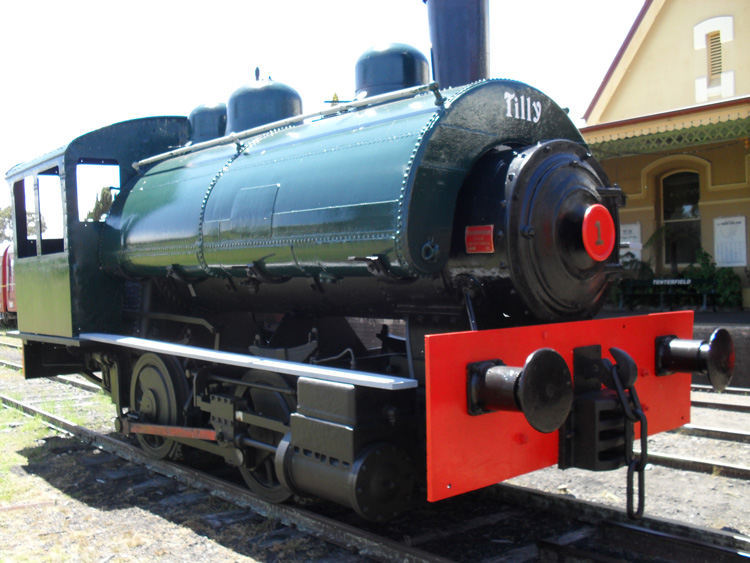
Malcolm Hawkins also contributed this photo of Emu Gravel
No.1 under restoration at Tenterfield on 8 August 2011.
At this stage a new running board can been
seen being prepared for mounting at the saddle tank.
An interesting feature are the old
running repairs evidenced by the welded patches in the rivetted saddle tank.
Apparently the locomotive is also
known as "Tilly".
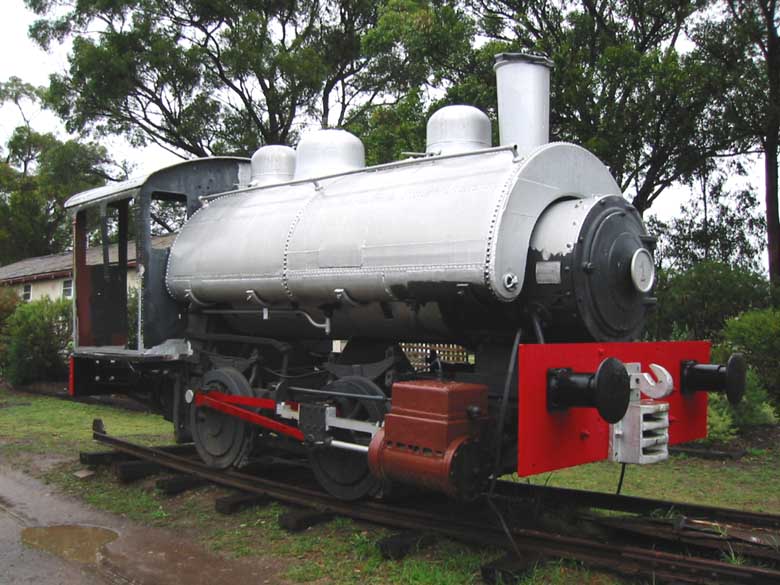
This earlier photograph shows Emu Gravel No.1 displayed in
the grounds of the NSWRTM on 6 March 2004.
It was slowly being repainted and repaired; at this stage
it was in undercoat and the cab's sheet metal was being restored.
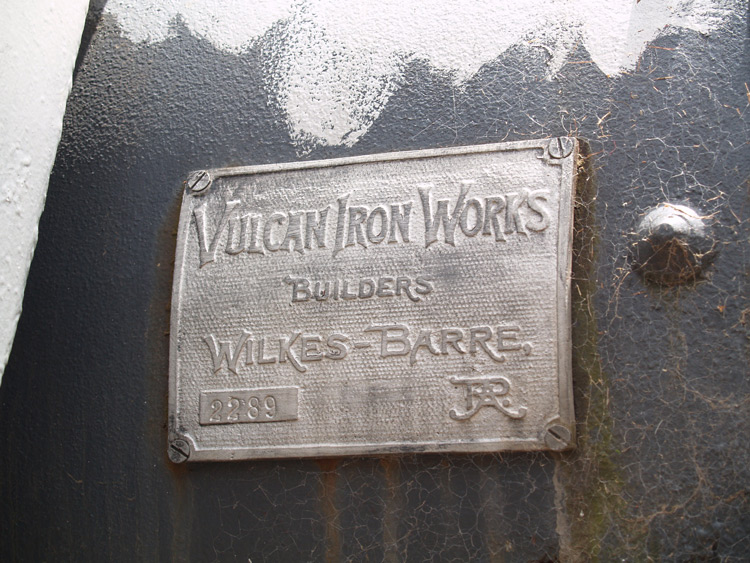
A detail of the builder's plate attached to the smokebox.

This view shows Emu Gravel No.1 displayed in the grounds of
the NSWRTM on 17 March 2003.
At this stage it was being repainted; the buffers were
temporarily removed and the cab under repair.

Sister locomotive NSWGR 1022 (Vulcan Iron Works B/N 2505 of
1916) at the former Parramatta Park Steam Tram Museum in 1992.
This photo was kindly contributed by Mark Newton.
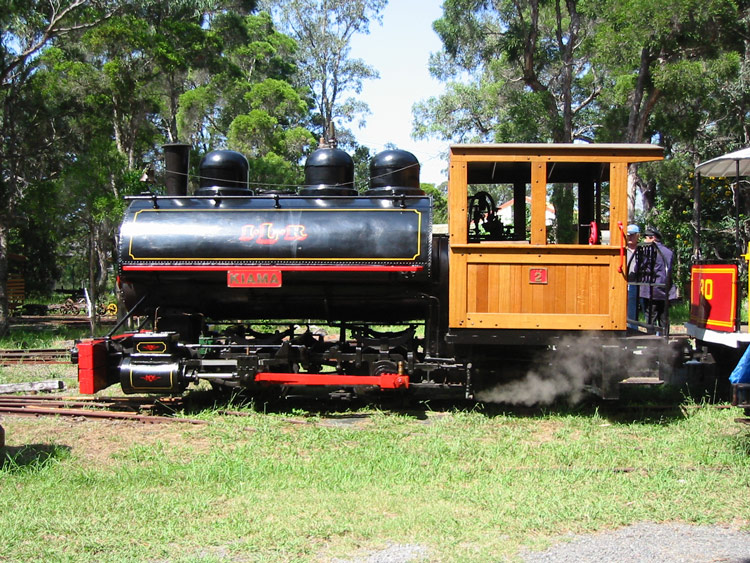
Here is a similar machine built by Davenport to 2' gauge –
‘Kiama’ PWD No.65 at the Illawarra Light Railway Museum.
References
|
a
|
L. Oberg,
'Locomotives of Australia, 1850s –
2010 - Fifth Edition',
published by Rosenberg Publishing Pty Ltd, Dural NSW.
|
|
b
|
Eardley,
G. H.
'Locomotives: A Guide - Enfield
Railway Museum',
published
by the NSWRTM, 1973.
|
|
c
|
‘Roundhouse’
magazine,
published by the NSWRTM,
Volume XIII No.2 of July 1976,
article ‘Museum on the Move’
pp.17.
|
Page updated: 11 September 2022






